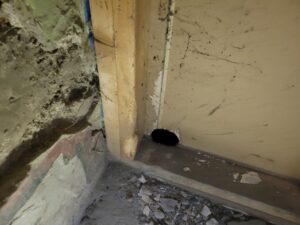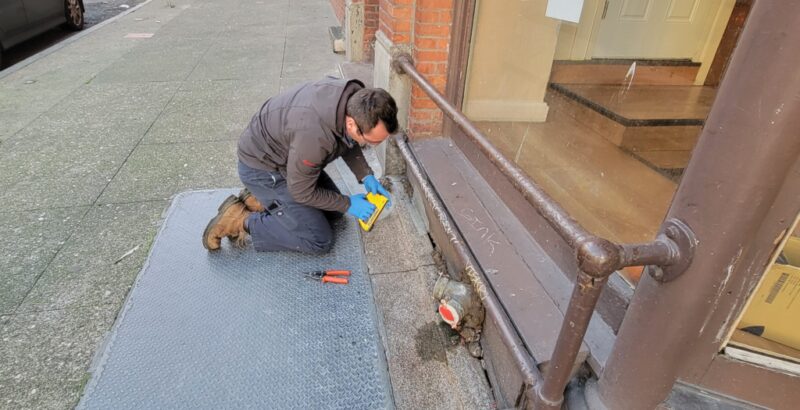Pest Management Solutions for Your Business
Were you aware that 45 percent of rodent issues take place during the fall and winter? Did you know other overwintering pests including cluster flies actively seek new places to live as temperatures drop? Armed with this knowledge, facility and property managers need to make sure their pest exclusion efforts are getting the job done.
As fall and winter approach a pest’s traditional food sources are depleted and commercial properties – especially food processing, distribution or warehousing facilities, restaurants and grocery stores – become attractive locations, especially for rodents, searching for new food sources and a warmer place to wait out the winter.
An Ounce of Exclusion…
The Sprague Pest Experts know it is far easier to prevent a pest or rodent infestation than to eliminate it after it establishes a presence in a commercial property. This means instituting a consistently applied pest exclusion program.

An effective exclusion program is a shared effort between clients and their pest management service provider.
Structures that are unattractive and hard to access are of less interest to pests. A thorough exclusion program, combined with good sanitation and maintenance practices, is an effective approach to lessen the threat posed by pests.
Where does an effective pest exclusion program start? It begins with a thorough inspection of the exterior (and interior) conditions to identify structural deficiencies needing correction.
An integrated exclusion program not only includes physically blocking pest access points (i.e., cracks in the foundation, missing screens on vents, missing door sweeps and weather stripping) but also adjusting sanitation and cleaning protocols, and employee training on how to reduce pest conducive conditions.
An effective exclusion program is a shared effort between clients and their pest management service provider. It involves facility and property managers, their maintenance, sanitation and engineering staffs, and the pest management professional.
Vulnerable Pest Areas in Commercial Facilities
What areas within commercial properties are most vulnerable pest incursions? Sprague has identified the following:
- Foundation Areas
- Roof/Roofing Materials
- Ventilation and Utility Openings/Chimneys
- Exterior Landscape (i.e., trees in contact with the roof)
- Eaves/Soffits
- Exterior Doors/Windows
- Loading Docks
To comply with the increased scrutiny from third-party auditors and government inspectors, it is recommended corrective actions be documented and placed in the facility’s pest management file so it can be easily shared during an audit or inspection. Remember the rule to live by: if it’s not in writing, it didn’t happen.
Sprague reminds clients that just because you did everything to keep pests, especially rodents out, it doesn’t mean they won’t keep trying to gain access. Pests can be very persistent in their foraging for food, water and shelter, and that means clients must adopt the same approach.
Pest Exclusion Checklist
- Walk around the entire foundation of the facility and check for cracks, gaps or holes. Holes as small as ¼ inch can be a potential entryway for mice or other pests. If you find cracks, gaps or holes, fill them with the appropriate materials.
- Don’t ignore weep holes – the small opening that allows water to drain from within an assembly. A weep hole can have a crack or gap inside of it that may not be visible to you from the outside but that a foraging insect may find. Fill weep holes with an appropriate material but still allow it to vent air and release moisture.
- Check around doors, door frames, and loading dock doors to ensure that there is a tight seal. Damaged, gnawed, worn, or missing door sweeps are one of the most common entry points for rodents and other pests.
- Inspect windows, screens and window frames and repair any damage. Don’t forget the windows located below ground level in window wells. Even if your wells are covered, the slightest gap will allow pests to crawl in and get access to your facility.
- Check openings where plumbing, gas and electric or cable wiring enters your facility as well as exhaust vents. Any gap around the pipes or wires should be filled with material to form a tight and secure closure. And don’t think you only need to check the entry points near the ground. Most rodents have no difficulty scaling siding, wires, or branches to get to openings above the ground.
- Inspect the roof line for any gaps. Ensure that the shingles, ventilators, chimney and vent screens are all in place and undamaged. Reattach areas that may be pulling away and fill any gaps.
- Install door sweeps. Various models of door sweeps are available and fit most common door sizes and types, and they are easy to install. Make sure to select one made of durable materials that can withstand the punishing environments (i.e., constant closing, forklifts, etc.) that are found in commercial facilities as well as the weather.
Discover The Sprague Difference
For more information on how Sprague Pest Solutions can assist you establish an effective pest prevention or management program in your commercial property, call 855.805.0755.

